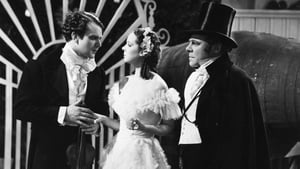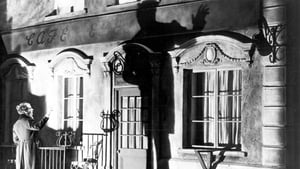Contact: [email protected]
Video Sources 0 Views

Synopsis
[ez-toc]




Introduction
In the vast tapestry of old movies, some gems stand out like beacons, invoking the nostalgia of a bygone era. “Waltzes from Vienna Colorized” (1934), directed by the iconic Alfred Hitchcock, is one such gem. Now, this classic film has undergone a transformative journey, stepping into the vibrant world of colorization. In this article, we delve into the rich history and enduring legacy of “Waltzes from Vienna Colorized,” exploring the intricate interplay between the old and the new in this captivating colorized version.
Read Media File Transfer Agreement: Terms and Conditions
Read FAQ
The Charm of a Bygone Era: Understanding “Waltzes from Vienna Colorized” (1934)
The Tapestry of the Plot
“Waltzes from Vienna Colorized” unfolds against the enchanting backdrop of 19th-century Vienna, immersing the audience in the world of Johann Strauss II, portrayed by Esmond Knight. The film is a cinematic adaptation of the stage musical of the same name, bringing to life the story of Johann “Schani” Strauss Jr. and his romantic entanglements, particularly with Resi Ebezeder, played by Jessie Matthews, and the aristocratic Countess Helga von Stahl.
A Hitchcockian Departure
Alfred Hitchcock, known for his later suspenseful masterpieces, took a departure from his usual genre with “Waltzes from Vienna Colorized.” While the film lacks the suspense and thrills that characterize Hitchcock’s later works, it showcases his early directorial finesse. Hitchcock’s touch is evident in the framing of scenes and the subtle exploration of character dynamics, providing a unique lens through which to view the beloved operetta.
The Musical Soul: Johann Strauss II
At the heart of “Waltzes from Vienna Colorized” lies the music of Johann Strauss II, with the film serving as a tribute to the renowned composer. The Blue Danube waltz, synonymous with Strauss, takes center stage in a visually stunning sequence that is both timeless and emblematic of the film’s enduring appeal. The music becomes a character in itself, transporting audiences to the elegance and splendor of Vienna’s Golden Age.
The Journey to Color: Revitalizing a Classic Masterpiece
The Alchemy of Colorization
Colorizing old films is a delicate art, requiring a balance between historical authenticity and the desire to make classic movies more accessible to contemporary audiences. The process involves meticulously adding color to each frame, breathing new life into the monochromatic world of the past. In the case of “Waltzes from Vienna Colorized,” this transformation is nothing short of magical.
Weighing Artistic Enhancements
The decision to colorize classic films is not without controversy. Purists argue that it risks diminishing the historical authenticity of the original black-and-white version. However, proponents of colorization argue that it allows a new generation of viewers to connect with these cinematic treasures in a more relatable way. “Waltzes from Vienna Colorized” exemplifies the potential benefits, adding a layer of visual splendor to its already enchanting narrative.
The Blue Danube in Full Bloom
One of the most striking examples of the colorization’s impact is the rendition of the “Blue Danube” waltz. The once-muted shades of black and white burst into a kaleidoscope of colors, complementing the elegance of the dance and the grandeur of Vienna. The transformation breathes new life into this iconic sequence, inviting viewers to experience the magic of the Blue Danube in a way never seen before.
From Cinematic Flop to Rediscovered Gem: The Reception and Reappraisal of “Waltzes from Vienna Colorized” (1934)
Initial Reception
Upon its release in 1934, “Waltzes from Vienna Colorized” faced a mixed reception from both audiences and critics. The film, a departure from Hitchcock’s suspenseful tendencies, struggled to find its footing in a cinematic landscape dominated by different genres. However, the initial lukewarm response did not define the ultimate fate of this cinematic piece.
Rediscovery and Reassessment
As years passed, cinephiles and scholars revisited “Waltzes from Vienna Colorized,” shedding new light on its significance within Hitchcock’s diverse filmography. The film’s unique blend of romance, music, and historical setting began to be appreciated in a different light. Today, it stands as a testament to Hitchcock’s versatility and the enduring appeal of the operetta genre.
Johann Strauss II on Screen
Comparisons with other cinematic portrayals of Johann Strauss II, particularly in films like “Strauss’ Great Waltz,” reveal the nuanced approach taken by “Waltzes from Vienna.” Esmond Knight’s portrayal captures the composer’s passion for music and the complexities of his personal life. The film offers a more intimate look at Strauss, portraying him not just as a musical genius but as a man entangled in the complexities of love and ambition.
Preserving Cinematic Heritage: Ensuring the Longevity of Colorized Classics
Archival Importance
The journey from black and white to colorization is not merely a cosmetic one; it involves the preservation of cinematic heritage. Film archives play a crucial role in safeguarding the original versions of these classics, ensuring that future generations have access to the unaltered historical artifacts. “Waltzes from Vienna” in its original form remains a valuable piece of cinema history.
Digital Remastering for Modern Audiences
The advent of digital remastering has further elevated the visual quality and stability of colorized films. These enhanced versions allow modern audiences to appreciate the nuances of classic cinema in high definition. The marriage of old-world charm with cutting-edge technology ensures that films like “Waltzes from Vienna” continue to be accessible and relevant.
The Enduring Allure of a Colorful Past
Notable Performances
As we navigate through the resplendent world of “Waltzes from Vienna,” it’s essential to acknowledge the stellar performances that contribute to its enduring allure. Edmund Gwenn, Jessie Matthews, Esmond Knight, and Fay Compton breathe life into their respective characters, infusing the film with a captivating vibrancy. Their portrayals add depth and dimension to the romantic entanglements and musical passions that unfold on screen.
A Symphony of Talent
Edmund Gwenn, known for his later role as Kris Kringle in “Miracle on 34th Street,” delivers a memorable performance as Johann Strauss I, adding a paternal touch to the narrative. Jessie Matthews shines as Resi Ebezeder, embodying the spirit of the romantic muse. Esmond Knight’s portrayal of Johann Strauss II captures the internal struggles of the maestro, while Fay Compton as Countess Helga von Stahl adds a touch of aristocratic elegance to the ensemble cast.
Conclusion
In the tapestry of cinema, “Waltzes from Vienna Colorized 1934” emerges as a unique masterpiece that transcends the boundaries of time. The colorization process, while sparking debates among cinephiles, undeniably breathes new life into this classic operetta. As we journey through the enchanting world of 19th-century Vienna, guided by the melodies of Johann Strauss II, we witness the delicate dance between old and new.
In the final notes of this cinematic symphony, “Waltzes from Vienna” invites us to savor the magic of a colorful past. The allure of the operetta, coupled with the visual splendor of colorization, creates an experience that bridges generations. It is an invitation to rediscover the old in a new light, to appreciate the timeless charm of classic cinema, and to celebrate the enduring legacy of a colorful masterpiece. As you seek out “Waltzes from Vienna Colorized 1934,” let the dance of the Blue Danube carry you into a world where old meets new, and the magic of cinema knows no bounds.











